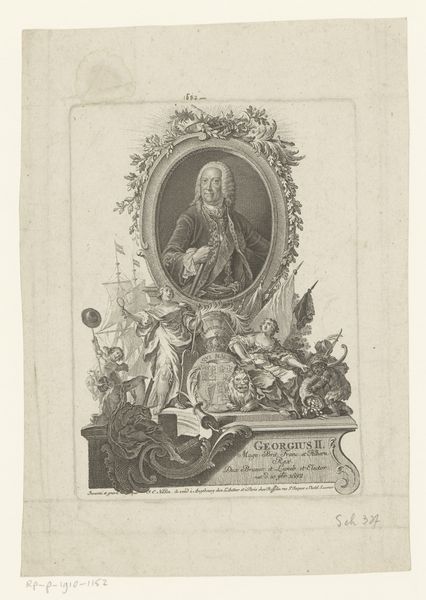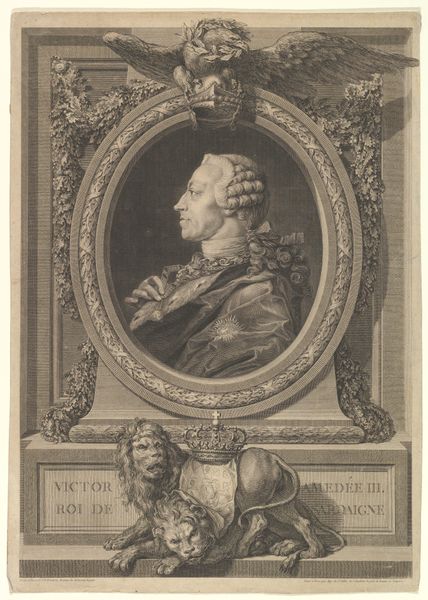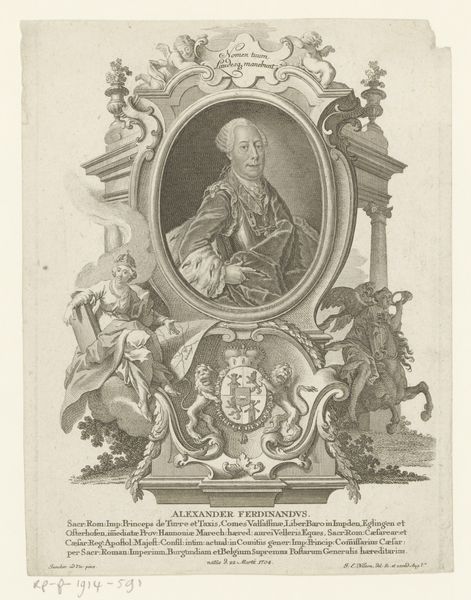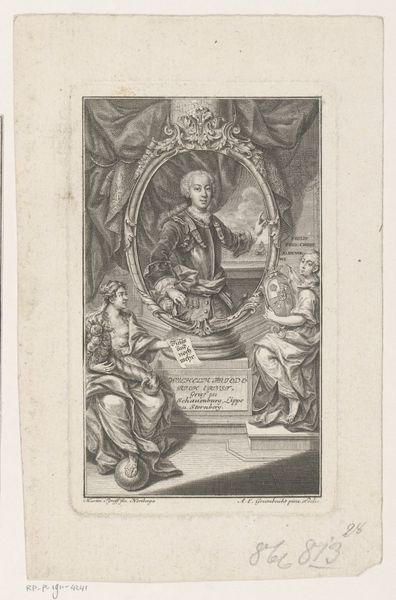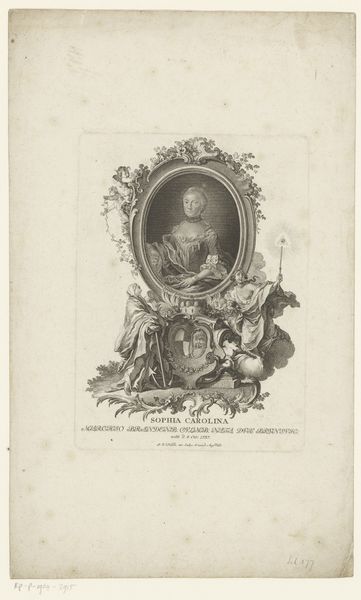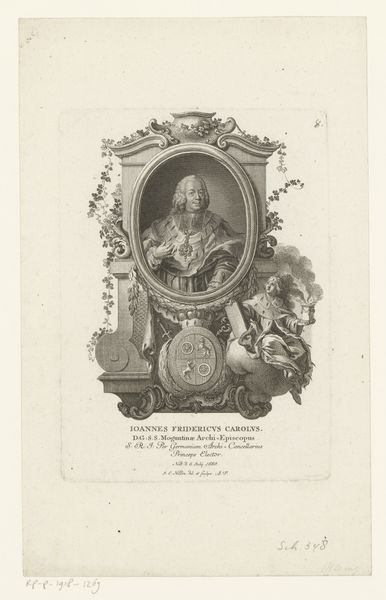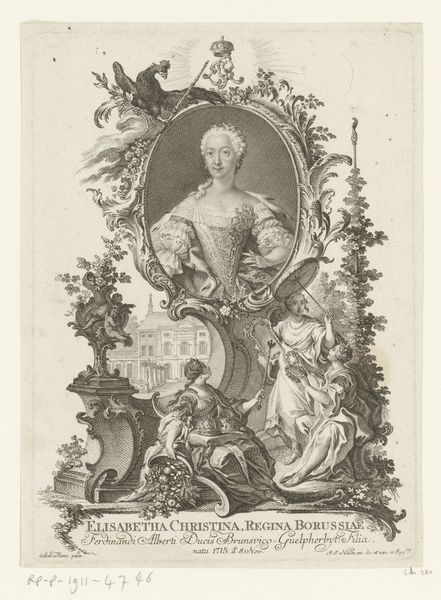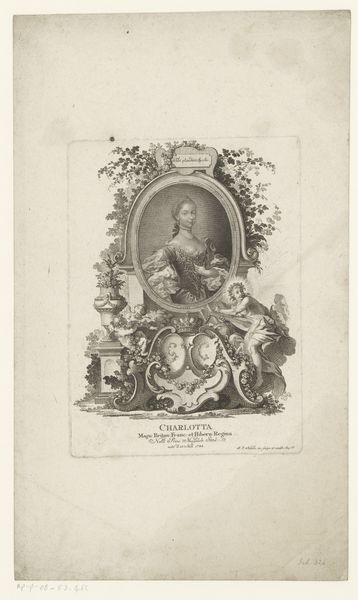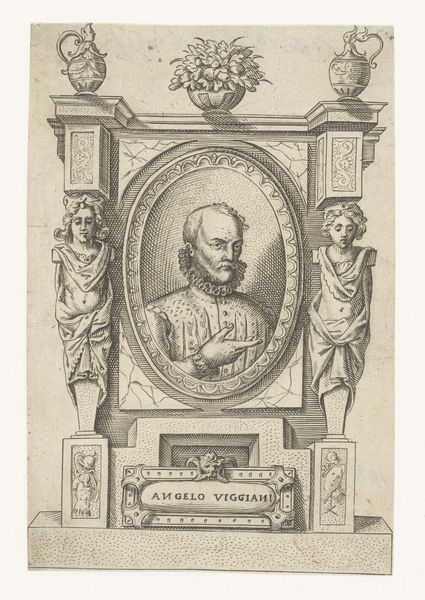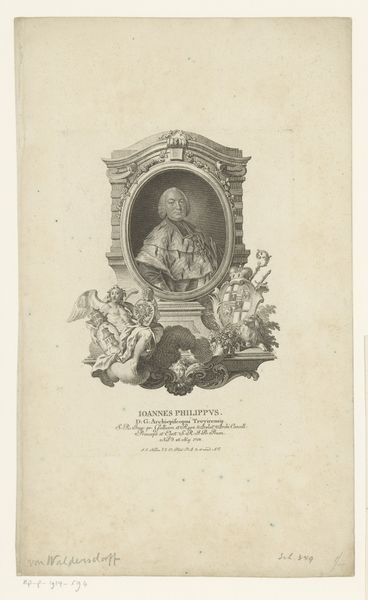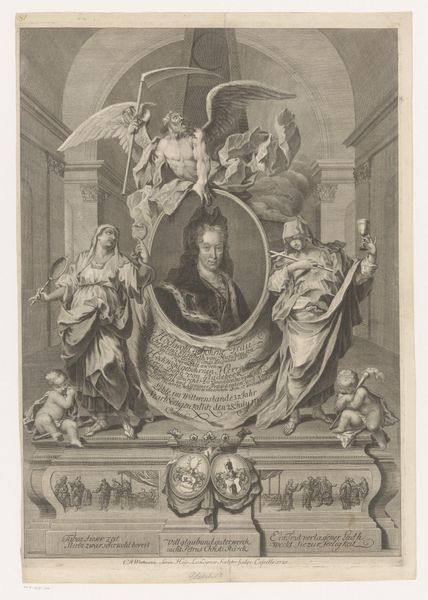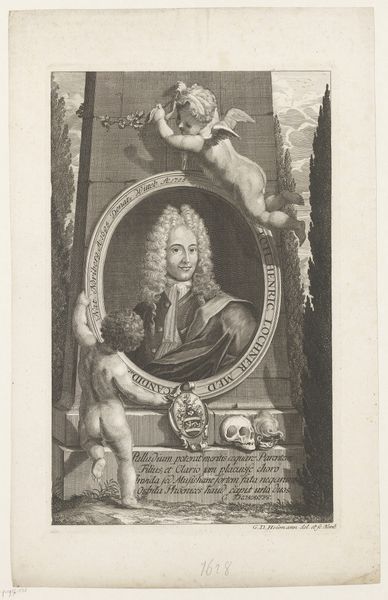
Dimensions: height 230 mm, width 170 mm
Copyright: Rijks Museum: Open Domain
Editor: This is a print from somewhere between 1740 and 1788, located at the Rijksmuseum. It's a portrait of Peter the Great, Tsar of Russia, made with engraving techniques. It has a very formal feeling, but also feels sort of…theatrical, with all the ornamentation. What’s your take on this piece? Curator: Theatrical is spot on. It's a piece of carefully constructed propaganda. I'd bet it's Baroque in style, judging from its ornate grandeur. Engravings like these were a way to broadcast an image, a specific version of Peter, across a wide audience. The symbolism is layered - notice the figure holding the flag and what that could suggest. Peter wasn’t just a Tsar; he was crafting an image of an empire. It’s less about capturing likeness and more about building a brand. Don’t you think? Editor: Definitely, it’s like the 18th-century version of an official press release. All of those swirling details – the frame, the figures, the emblems – they're not just decorative, they're saying something about power and Russia’s place on the world stage. The stern figure and rigid look, feels pretty in line with the vibe too. Curator: Precisely! Think about who this was aimed at. Probably not peasants in the field. Images like these cemented Peter’s legacy, positioning him as a divinely appointed leader. He is literally ‘great’. Who's funding all this? Where and how this would circulate would determine how effective its purpose was in the long term. Makes you wonder, doesn't it? Editor: It does. So, what starts as a simple portrait is actually a complex piece of political messaging. It also makes me consider portraiture in an entirely different manner now, and how propaganda takes new forms throughout history! Curator: Indeed! I always wonder what Peter himself would have made of it.
Comments
No comments
Be the first to comment and join the conversation on the ultimate creative platform.
